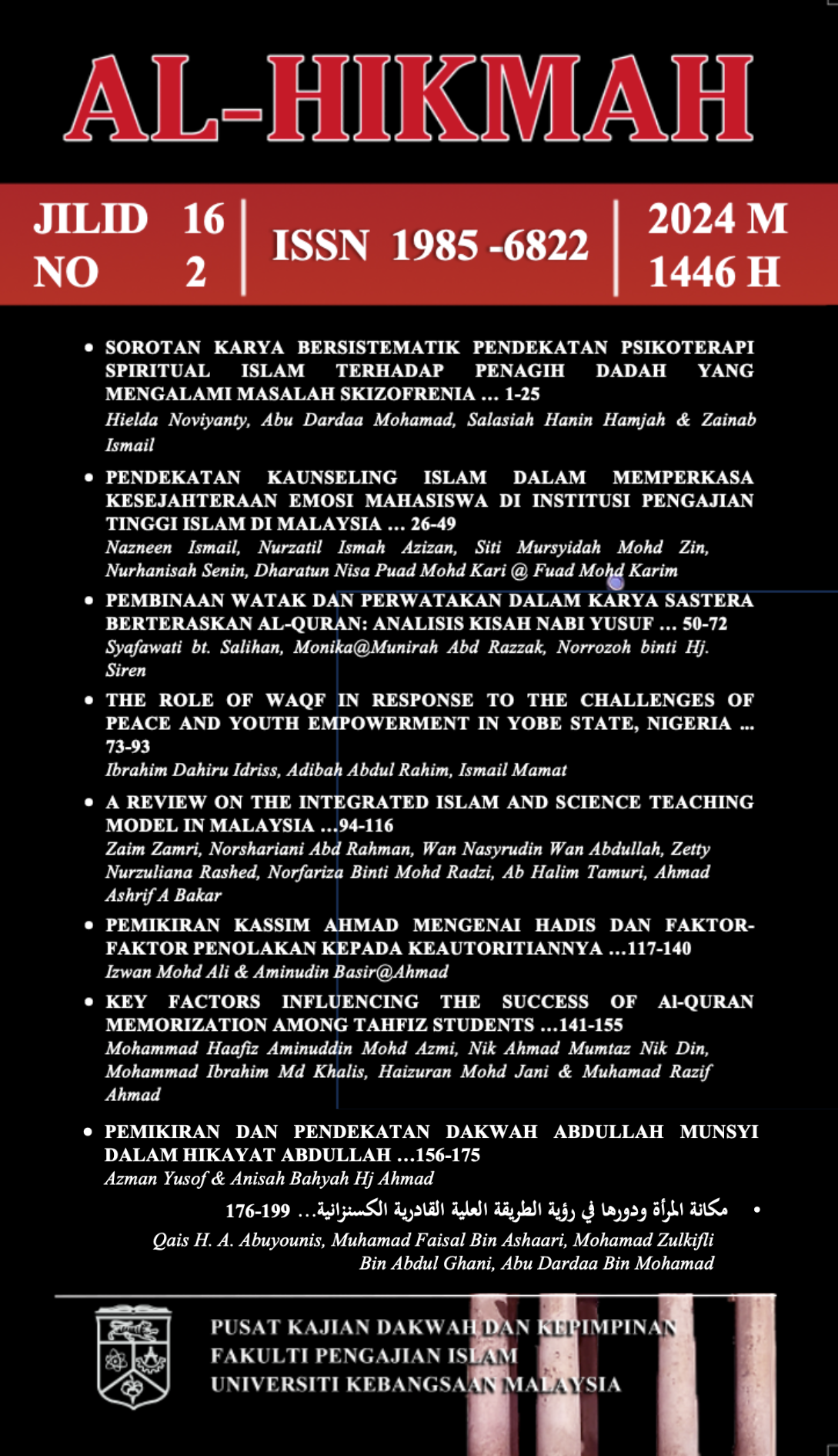A Critical Review on the Integrated Islam and Science Teaching Model in Malaysia:
Fundamental Cognitive Aspects of Teaching
Abstract
The advancements in science and technology brought about by the Fourth Industrial Revolution have indirectly highlighted the need to integrate spiritual components into science education effectively. Nevertheless, as this transformation unfolds, educational institutions are increasingly expressing worries about students' character and emotional and spiritual growth. The conventional cognitive domain list, which has been the main emphasis of traditional education and is commonly used to organize curriculum learning objectives, needs to be revised to address the existing gap, especially from an Islamic education point of view. Various pedagogical approaches have been proposed to reconcile scientific knowledge with Islamic ideals by integrating Islamic teachings and science. This research analyses the existing teaching and learning that combine religion, primarily Islam, with the science teaching and learning model. This study has identified the key characteristics required for an educational approach that combines science and religion, which are tadabbur (contemplation), ibrah (lesson), and reflection, in addition to other conventional cognitive aspects, such as innovating and creative thinking. These characteristics can be suggested to produce a comprehensive integrated Islam and science curriculum taxonomy which is important for the holistic development of human being.
Copyright (c) 2024 Al-Hikmah

This work is licensed under a Creative Commons Attribution-ShareAlike 4.0 International License.
Authors retain copyright and grant the journal right of first publication with the work simultaneously licensed under a Creative Commons Attribution License (CC BY-SA 4.0) that allows others to share the work with an acknowledgement of the work's authorship and initial publication in this journal.





